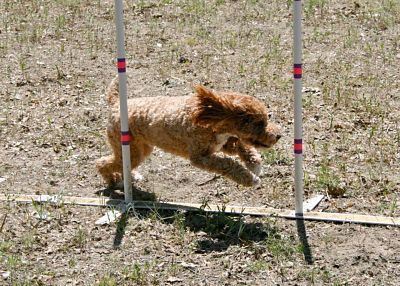Over two years ago, I took my miniature poodle, Harley, for puppy kindergarten at Puppy Love Training. Dr. Kay Stephens is a veterinarian who worked full time in private practice until deciding to devote her time to dog behavior and training. The puppy kindergarten class was filled with socialization, basic obedience, and tips to solve behavioral problems. Kay noticed that I was very interested in dog training and got me involved by training her puppies during class, improving my skills as a trainer. I am now teaching an Intro Agility class, private obedience lessons, as well as substituting for Kay in her puppy kinder classes.
One of the most important lessons that Kay taught me was in order to be a great dog trainer you not only had to be able to teach dogs, but their people too! When you are teaching classes, you get to spend time with the handler and dog for one hour a week usually. In order for a dog to really learn something, they should be practicing those behaviors every day. To do this, we have to teach the training skills to the handlers so that they can be successful at home.
At Puppy Love we use positive reinforcement to train dogs, and specifically use a clicker. A clicker is a fast, effective way to communicate to your dog that the behavior was correct. One difficulty that people encounter is bad timing. We want to capture the moment in which the dog is performing the correct behavior—almost like taking a picture. Sometimes we can click too early or too late and miss the behavior entirely. Using positive reinforcement means that nothing bad will happen to your dog due to poor timing, although they may become confused! We try to help our handlers improve their timing so that they are capturing the great behaviors of their dog.
One of the hardest parts while training is breaking down behaviors into small pieces, or approximations of the goal behavior. Let’s apply this to a down stay. Your goal is to have your dog stay down for 1 minute. You can’t go from asking the dog to stay for 10 seconds to the entire minute. Chances are that you are not going to be successful, and the dog will get up. Increasing the time in smaller increments (3-5 seconds) will make your training sessions more effective and actually improve the behavior faster.
You don’t have to be a professional to have fun with your dog; training in short, five minute sessions a couple of times a day will work wonders! So get out there and train your dog!

Harley doing the weaves!




You must be logged in to post a comment.